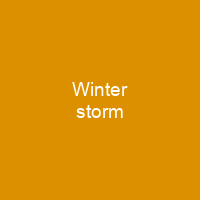Understanding Winter Storms: A Guide to Survival
Imagine a winter storm as a giant, icy hand reaching out from the sky, gripping your region with its cold, relentless fingers. This phenomenon is not just a meteorological event; it’s a force that can disrupt lives and test our preparedness. Let’s dive into what makes these storms so formidable.
Formation of Winter Storms: A Cold Journey
Winter storms are born when warm, moist air meets the cold, dry air above. Picture this as a battle between two opposing forces – one trying to push through and the other resisting fiercely. The result? A swirling mass of clouds, snow, ice, and rain that can blanket entire regions in a matter of hours.
Types of Winter Precipitation
The type of precipitation you get depends on the temperature at different levels of the atmosphere. If it’s below freezing near the ground, expect snow or sleet. But if there’s a layer of warm air above, rain might fall and then freeze upon contact with the cold surface – creating that dreaded ice storm.
Winter Storm Warnings: When to Take Action
When winter storms are predicted, local authorities issue warnings based on specific criteria. For instance:
- 6 inches of snow in 12 hours: This is a serious warning, as it can paralyze communities and cause significant disruptions.
- Blowing snow reducing visibility at winds less than 35 mph: Such conditions are dangerous for drivers and pedestrians alike.
- Ice accumulations of 0.25 inches or more: This can lead to hazardous driving conditions, especially on icy roads.
- Wind chill index below -35°F (-37°C) for over 3 hours and sustained wind speed of at least 10 mph: These are the coldest and most dangerous conditions you might face during a winter storm.
The Impact of Winter Storms: A Closer Look
Winter storms can be devastating. They disrupt daily life, causing power outages, road closures, and even fatalities in extreme cases. Just think about the 1947 blizzard that left 2 feet of snow with drifts up to 12 feet – imagine trying to navigate through that!
These storms can also lead to health issues like carbon monoxide poisoning from improperly ventilated generators or heaters, and heart attacks due to strenuous shoveling. The weight of heavy snow can cause roofs to collapse, while freezing rain can damage power lines and trees.
Notable Winter Storms: A Timeline of Disasters
Winter storms have a history of causing significant disruptions and economic losses. Here are some notable events:
- The 1998 North American ice storm: This event caused $3 billion in damage, affecting millions across eastern Canada and the northeastern United States.
- The 2005 December Ice Storm: It produced extensive ice damage across the Southern United States, leading to power outages and at least 7 deaths.
- 2021 Winter Storm: This storm was one of the deadliest since the Blizzard of 1996, impacting the Midwest and Southcentral United States, with significant issues in Texas.
Preparing for Winter Storms: A Checklist
To weather a winter storm, it’s crucial to be prepared. Here are some steps you can take:
- Stock up on essentials: Food, water, medicines, and hygiene items should always be readily available.
- Stay warm: Keep warm clothes ready for the cold weather.
- Have a flashlight handy: In case of power outages, you’ll need light to navigate your home safely.
- Stay informed: Follow local news and weather updates to stay aware of any changes in conditions.
- Help each other: Community support is key during such times. Check on neighbors who may be vulnerable.
- Avoid unnecessary travel: Only venture out if absolutely necessary, as roads can become treacherous with snow and ice.
Remember, the best defense against winter storms is preparation. By understanding their formation, recognizing warning signs, and taking proactive steps to prepare, you can minimize the impact on your life and community.

Winter storms are a stark reminder of nature’s power and the importance of being prepared. By understanding these events, we can better protect ourselves and our communities from their harsh realities.
You want to know more about Winter storm?
This page is based on the article Winter storm published in Wikipedia (retrieved on February 17, 2025) and was automatically summarized using artificial intelligence.





